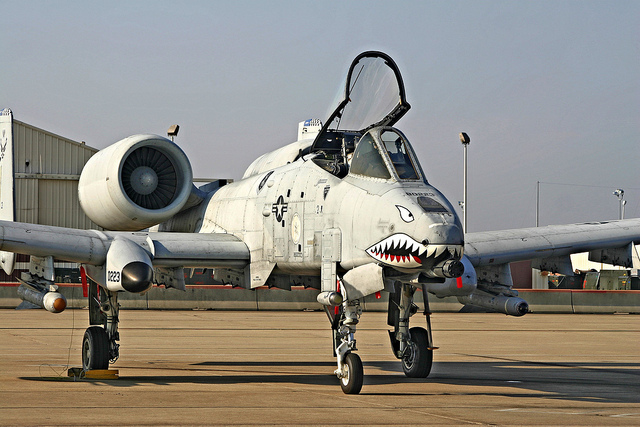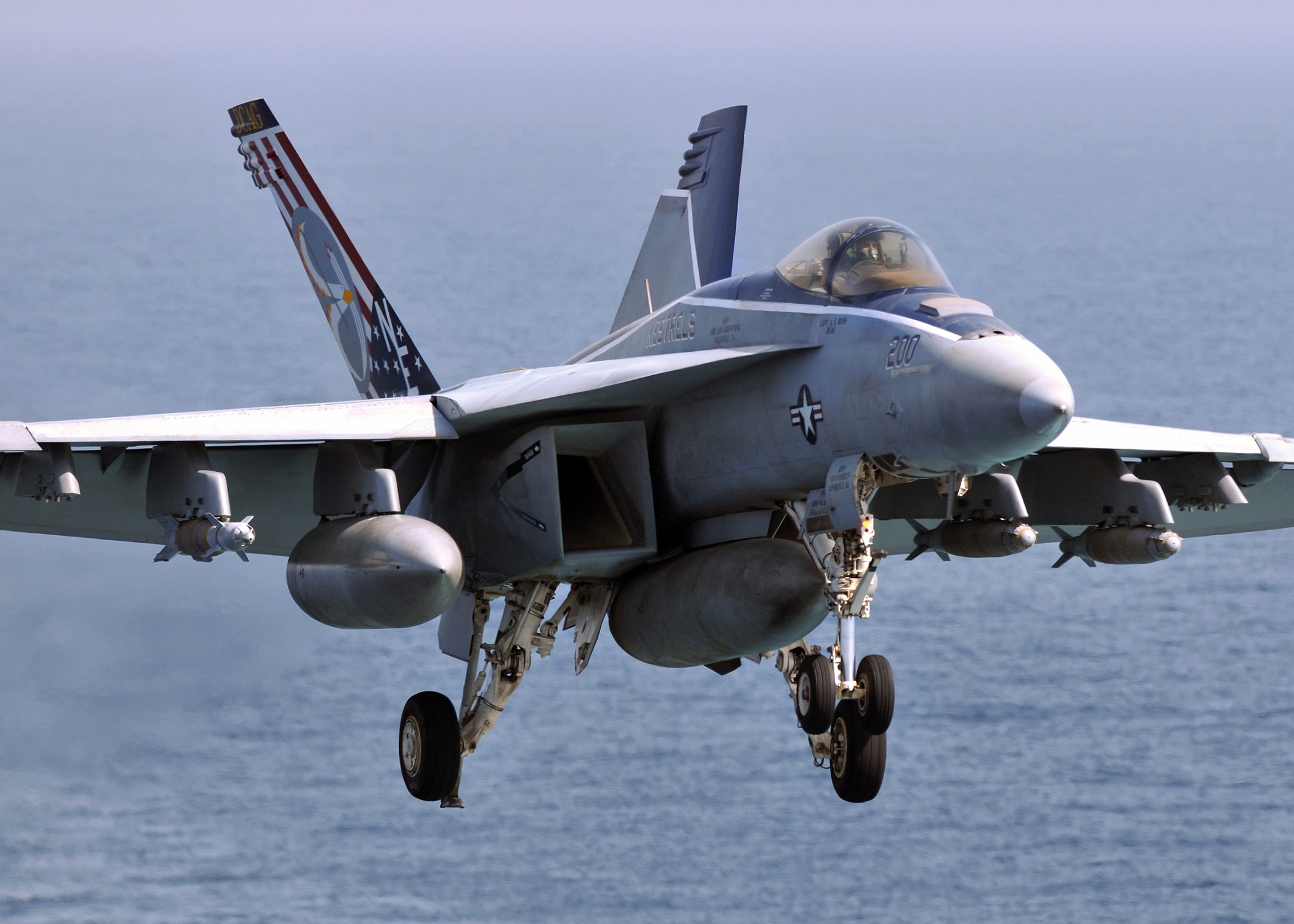The “final” version of the Pentagon policy bill is making its way, step by painful step, through the Congress this week. Why are we putting final in quotation marks? Well, the last “final” version of this bill was vetoed by the President in October.
Fast forward a couple of weeks and we have the latest “mini-grand bargain” in the form of the Bipartisan Budget Act of 2015. Among other things, this legislation sets budget caps for the Pentagon’s base budget and the off-budget Overseas Contingency Operations (OCO) slush fund. So this second version of the Pentagon’s policy bill was amended to come in below these caps even though authorizing legislation like this doesn’t actually cause the U.S. Treasury to spend a single dime. It takes a separate spending bill to do that. (More on that in the coming weeks.)
 |
| An A-10 “Warthog.” (Photo credit: darinm16 via Flickr) |
But the National Defense Authorization Act, as this bill is called, does set policy as well as showing us which way the wind is blowing on funding levels for weapon systems and other Pentagon spending programs. And, as we did last year, we amused ourselves by trying to figure out all the things the Congress doesn’t want the Pentagon to do. In fact, just in the 27 (!) page table of contents, the word “prohibition” appears 28 times. And the word “limitation” appears 55 times. So, Pentagon, don’t go all crazy and let that military firepower go to your head. The Congress will tell you exactly what you can’t do. There are many, many things the Pentagon is specifically prohibited from doing, but here’s a few of our “favorites.”
The Pentagon CAN’T:
- Retire the A-10 aircraft. (And while we’ve pointed out the ridiculously expensive F-35 can’t really be expected to fulfill the A-10 mission, if the Congress is going to keep the A-10 alive, they need to cancel the F-35 to save any money.)
- Retire the EC-130H Compass Call aircraft.
- Retire the KC-10 aircraft.
- Retire Helicopter Sea Combat Squadron 84 and 85 aircraft.
- Conduct an additional round of Base Realignment and Closure.
- Retire or prepare to retire Ticonderoga class cruisers or dock landing ships, or
- Remove the ballistic missile defense capabilities from Ticonderoga class cruisers.
So what can the Pentagon do, according to this legislation?
 |
| F/A-18 E/F Super Hornet |
The Pentagon CAN:
- Buy another 12 F-18 Super Hornets for about $1 billion. (Like with the A-10, we do believe the Super Hornet is an affordable alternative to the Navy’s requirements for the F-35 – but only if you don’t buy the F-35!)
- Spend $5.1 billion on Air Force F-35s.
- Spend $2.3 billion to buy 6 more Marine Corps F-35s than requested.
- Spend $873 million on Navy F-35s.
- Spend $852 million more on shipbuilding than the Navy requested.
- Spend $7.4 billion in OCO slush funds on procurement.
- Spend $191 million in OCO slush funds on research and development,
- Spend $37.2 billion in OCO slush funds on operations and maintenance,
- Spend $3.2 billion in OCO slush funds on personnel and, drumroll please…
- [Trumpet fanfare] Plan to obtain budget-neutrality for the defense commissary system and the military exchange system. [Trumpet fanfare]
We’ll be doing some more research on this last one. It’s an itsy-bitsy-teeny-weenie victory, but we’ll take our victories where we can get them. The Secretary of Defense is directed to come up with a plan that would require the commissaries and exchanges to be budget-neutral by October 1, 2018. Among the alternatives to be considered: privatization of this outdated system and closure of stores in “close proximity” with other stores.
There’s plenty more detail in this 1320 page bill, so we’ll keep digging and let you know what else we find.










